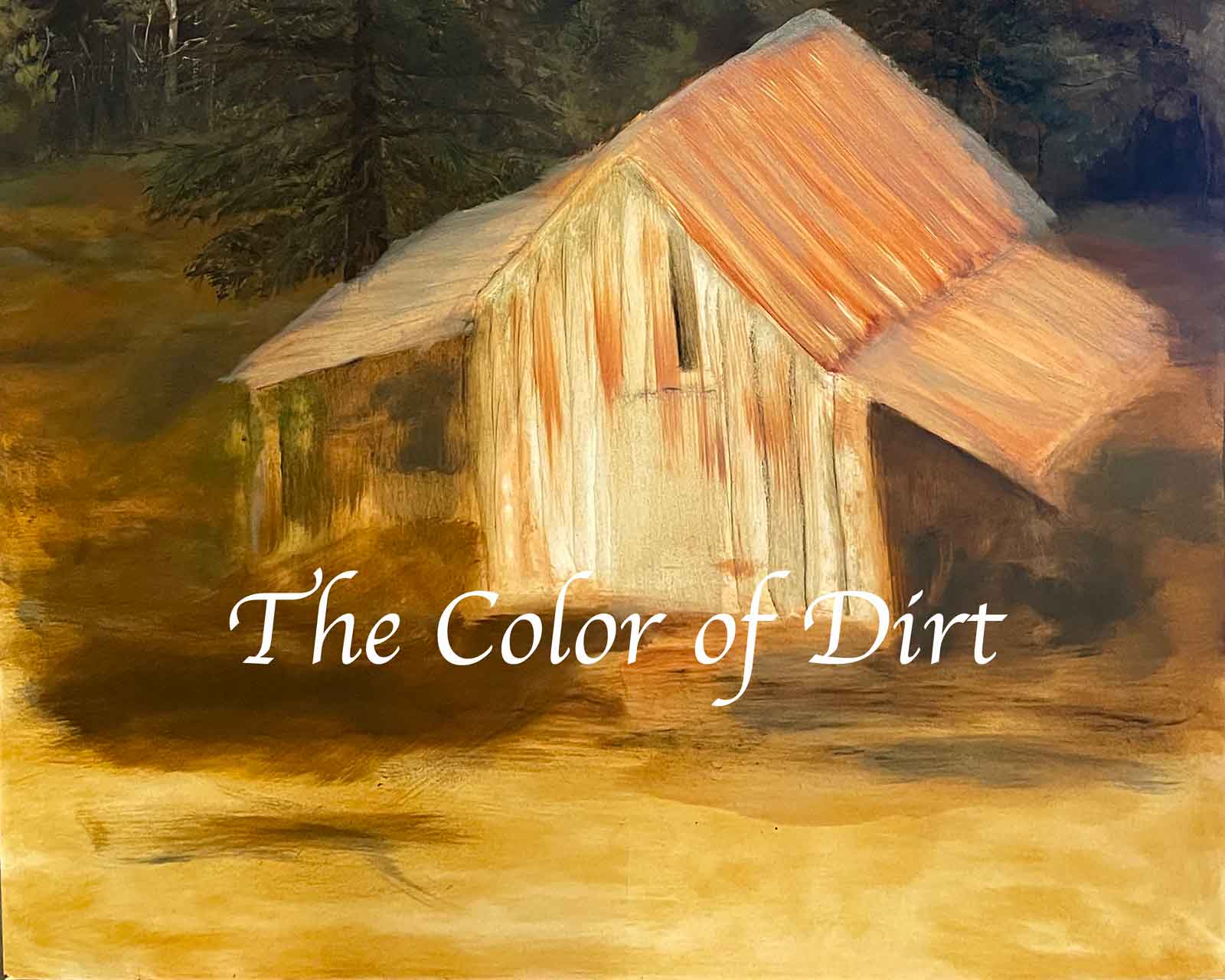The color of dirt in the Ozarks varies here around Wild Ozark. But the most predominate is a shade of yellow-brown. In some areas there is a darker brown, probably where there is more humus and organic matter. Some of that is clay.
Other areas is more reddish, where the iron-rich clay is mixed in. And sometimes the red clay is predominant.
For the painting of my old shed, I need the yellow side of the brown and I’m almost out of the tube I’m working with. So today is pigment washing so I can get the color of dirt around the shed.
I have a purchased bright yellow to adjust the colors of this ocher when I want to, but for the most part this yellowish rock will give me exactly the color I need. Why? Because it’s the same rock that makes the dirt to begin with.
Most of the soil around here is a result of eroded sandstone rocks. It’s poor for gardening because there isn’t much organic matter. But there is a lot of iron, and it’s the iron oxides that give all of the color of dirt to this land I call Wild Ozark.
I’ll darken or lighten the color as needed because the shades will vary according to where it is. It’ll look darker in the shade or especially if it’s wet or damp. I have brown made from another rock that will change the shade of yellow to match my intent.
But this yellow rock will form the foundation for all of the shades around it.


Getting a Smooth Pigment
Once I get the rock ground to a powder (I use a motorized pulverizer for large quantities), it’s still too gritty to make a paint that’s easy to use. Gritty paint is fine for added texture, but I need a smooth one.
That’s when washing come in. I’ll take the powder and add it to a quart jar. Fill the jar with water, shake, and pour out the colored water into other jars.
Now let the water settle. The finer pigments that were floating in the water will settle to the bottom. Once that’s done, pour off the mostly clear water and let the sediment dry.
Push the dried sediment through a fine mesh, and there’s the pigment ready to make paint in the actual color of dirt. You can keep the sediment after it dries and grind it again in a mortar and pestle, or use it for making sand art.



Here’s how the settling pigment looks today (next day).

Consolidating the Color of Dirt
Tomorrow I’ll pour off the water (discard) and compile the sediments to multiple smaller jars. Then those will have to settle again before I can pour off the excess water.

Once there’s only a thin layer of water in the smaller jars, then I’ll put them into the dehydrator to hurry the process along a bit.

All Update Posts about my Old Shed painting
Contact & About
email: madison@wildozark.com
phone: (479) 409-3429
The newsletter is monthly. My blog is sporadic, so if you want the posts to go to your inbox, put your email address below. Blog posts and newsletters aren’t always the same (very rarely are the same), so it won’t hurt to subscribe to both 🙂
I’m a nature-lover, real estate agent & artist. Sometimes, I also write things. I began using local pigments to paint scenes from nature in the Ozarks in 2018.
If you’re interested in buying or selling in rural northwest AR, get in touch with me by phone, text, or email. I’m happy to help! I have a separate website for my real estate blogging and information at WildOzarkLand.com.
All of my artwork is available in prints, and where originals are available, they are for sale. You can find all of that over at shop.WildOzark.com.
Call me “Roxann” or “Madison”, either one works.
For pretty much everything online, I go by Madison Woods, a pen name I adopted when I first began writing and then later with my art. For real estate, I use my real name, Roxann Riedel. And for my fiction, there’s yet another pen name: Ima Erthwitch.



Leave a Reply